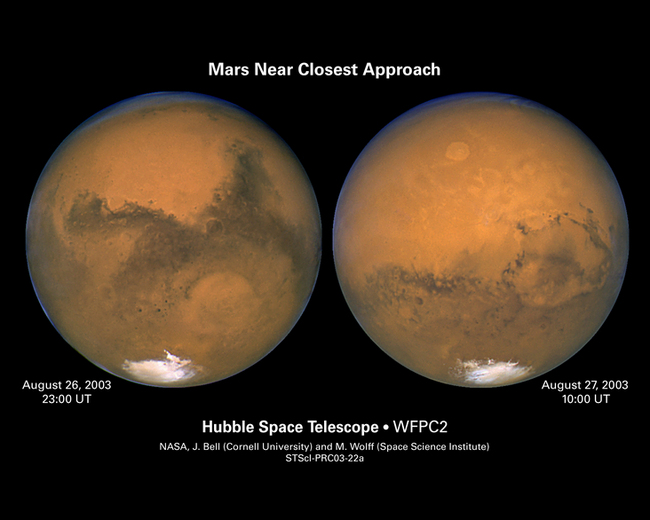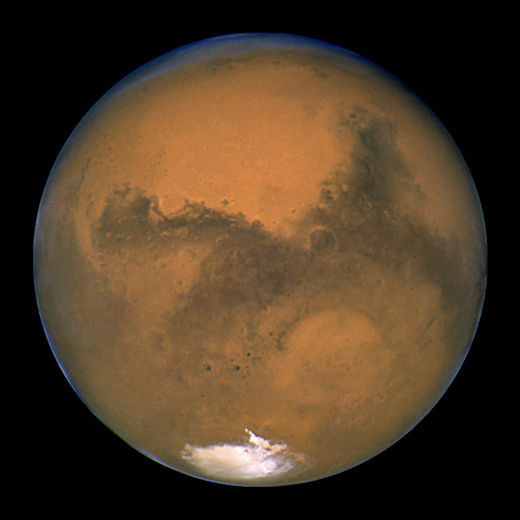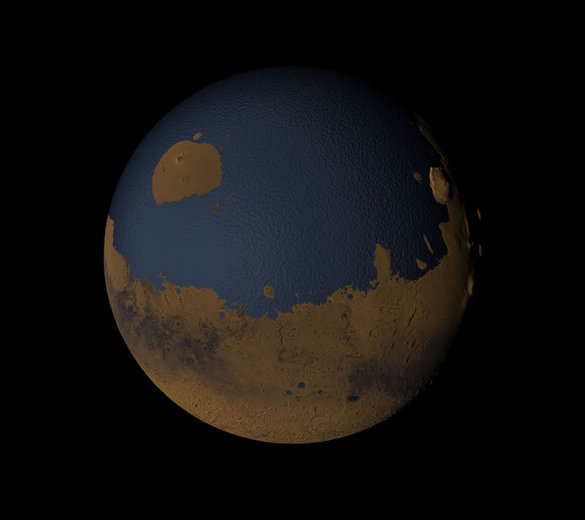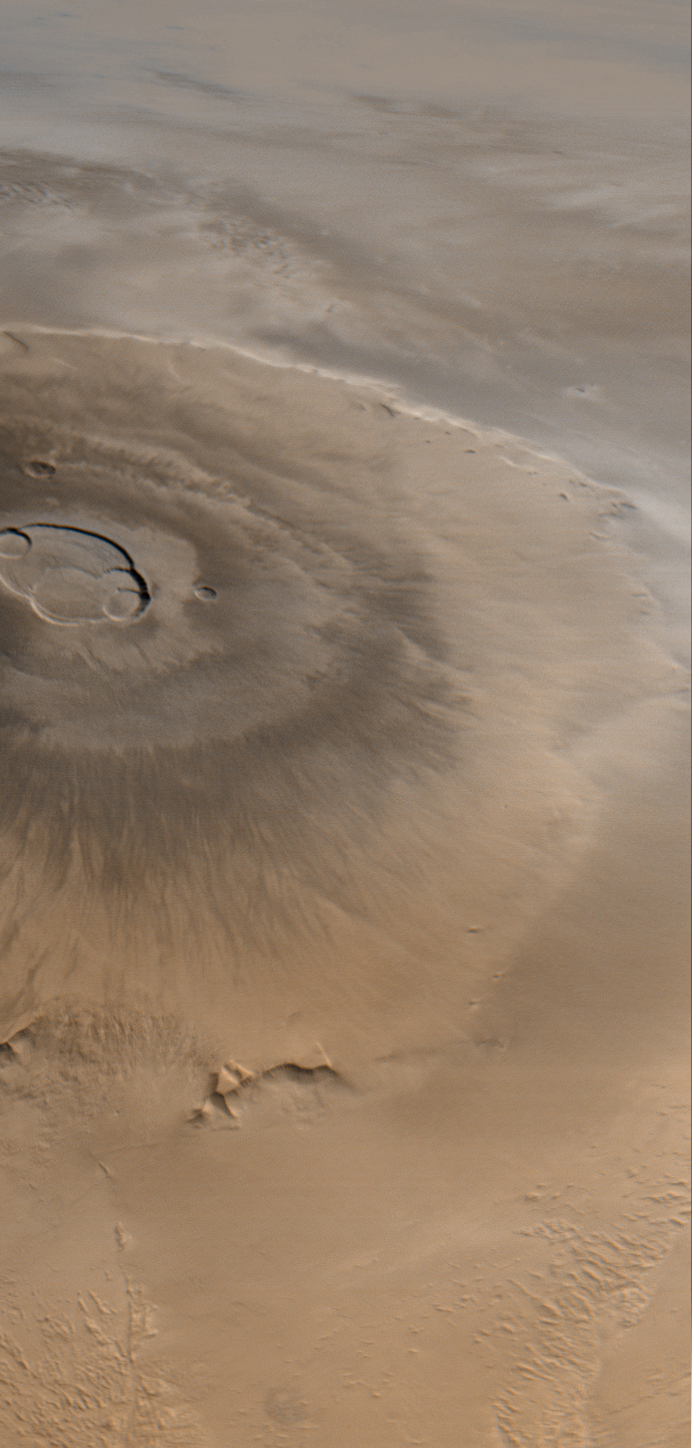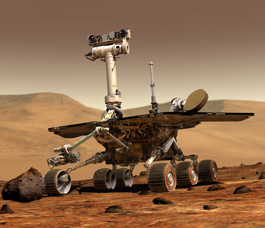The fourth planet from the Sun, Mars is also nick-named "The Red Planet" and named after the Roman God of war because of its "angry" red appearance.
Mars is about half the size of Earth and has a very thin atmosphere. This is made up of around 95.3% Carbon Dioxide. But it is so thin, it has no real effect of warming the planet. The average temperature is in fact minus 63°C. The hottest temperature being 22°C.
In the 18th Century, William Herschel observed dark areas on the surface of Mars which he theorised was caused by seas of water. This led to speculation that there was once life on Mars (or there still is). Hopes of intelligent life forms have since been put to bed by observations of baron lands, however it is still thought that primitive life did (or still does) exist.
Many probes have been to Mars. Most notably the two rovers Spirit and Opportunity. Both rovers returned lots of data and images. Spirit landed in 2004 and sent back over 124,000 images. Contact was lost in March 2010 as Martian winter hit. In 2006, one of its wheels became stuck in a sand dune after it travelled 4.8 miles.
The largest volcano in the Solar System is on Mars. Olympus Mons is three times bigger than Mount Everest and rises 24,000 metres above the surrounding area and is 600km across. Its last eruption is thought to have taken place 25 million years ago.
Mars can be seen with a naked eye from Earth especially at times of opposition. This is when the Earth lies between the Sun and Mars and occurs about every 26 months. Mars appears particularly close every 15 to 17 years. Mars becomes visible during the month of August and fades through September and October.



